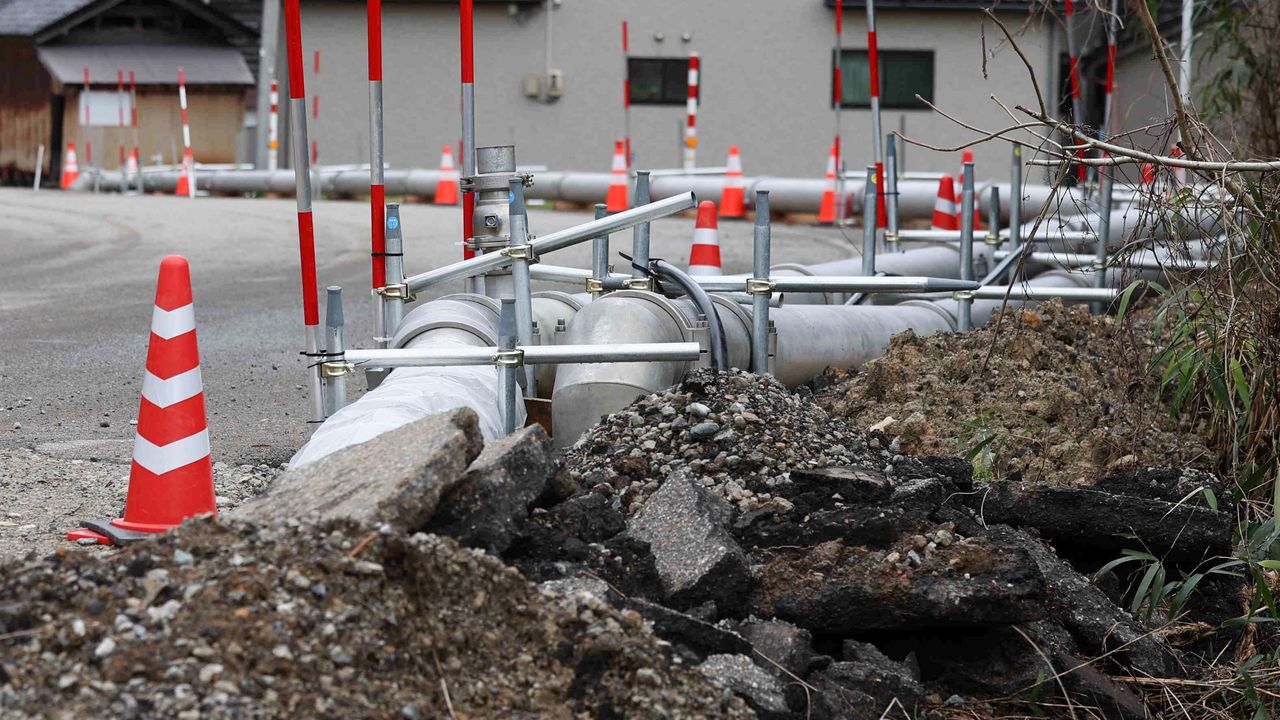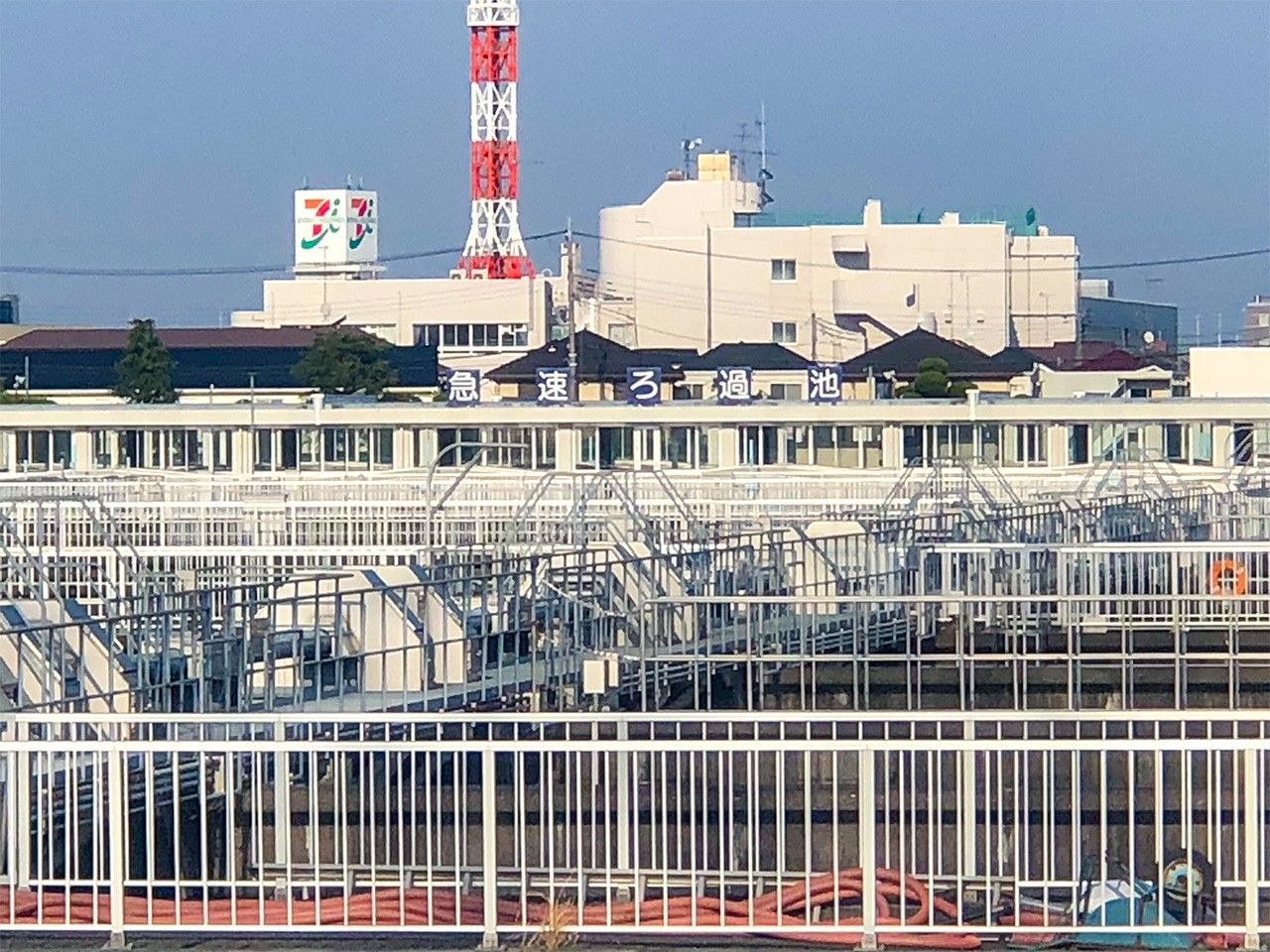
Wanted: Disaster Resilience in Tokyo’s Water Infrastructure
Society Disaster- English
- 日本語
- 简体字
- 繁體字
- Français
- Español
- العربية
- Русский
(For the first part of this report, see “Thirsty Times Ahead? Tokyo’s Crumbling Infrastructure Could Create Postquake ‘Water Refugees.’”)
No Upgrades in the Near Term?
The Tokyo Metropolitan Government’s Waterworks Bureau has been very slow to upgrade its drinking water infrastructure, despite having been aware for a considerable time of the seismic vulnerability of several of its treatment plants. The seismic upgrades to water treatment plants currently being carried out are detailed in the Master Plan for Construction of Tokyo Waterworks Facilities and the Tokyo Waterworks Management Plan, both of which were published in 2021. Under the plans the government aims to have 69% of water infrastructure earthquake-proofed by 2031. While this is indeed a significant increase from the 14% figure reported in 2020, it should be noted that this was a staggeringly low level to see nearly a decade after the Great East Japan Earthquake. In fact, in 2030 (19 years after 2011), nearly a third of the network will still not have been seismically upgraded.
The Master Plan includes a table that describes the progress of seismic strengthening work at the various treatment plants. According to the table, of the four major treatment plants that are fed by the Tonegawa and Arakawa river systems, three (Asaka, Kanamachi, and Misato) have yet to be fully upgraded. In fact, according to the Master Plan, upgrading work will continue beyond 2030 and for some parts of the network, the government has not even specified a completion date.
The table does not set forth any plan for improvements to the remaining plant, Higashimurayama. Representatives of the Waterworks Bureau note that many parts of the Higashimurayama plant lack seismic resilience. Reinforcement work at Higashimurayama is not scheduled to start until after two new replacement plants (provisionally named Sakai and Jōryūbu) have been built, though, which will be the 2030s at the earliest. This means that the network’s seismic resilience will remain insufficient for an extended period of time.

The Higashimurayama treatment plant. (© Power News)
As was mentioned in the previous article, the government-led Headquarters for Earthquake Research Promotion says there is a 70% chance of a magnitude 7 quake centered in Tokyo occurring in the next 30 years. This makes it seem particularly ill-advised for the Bureau to take such a leisurely attitude to upgrades.
Waterworks Bureau Cites Overall Assessment
In preparing these articles, we put our concerns to representatives of the Tokyo Waterworks Bureau in two interviews, followed up by written exchanges. Answering our questions in person were section heads from the Bureau’s administration and treatment sections who handle facility planning and plant maintenance.
Firstly, on the issue of seismic insufficiencies at multiple facilities, the Bureau admitted that it was fair to assume that portions of the network slated for seismic upgrades in the Master Plan scored poorly in seismic analysis. The staff said that they began performing seismic assessments of water treatment plants in fiscal 1998 after seismic requirements for water infrastructure were beefed up in 1997 in response to the Kobe earthquake two years earlier, and that since that time, assessments have been performed sporadically. At the very least, assessments were performed between 2001 and 2005, and between 2012 and 2017. This means that the government has been aware of the seismic deficiencies in the network for at least 10 years—20 in some cases. And yet, at the four main treatment plants representing 80% of Tokyo’s total treatment capacity, seismic strengthening work will not be completed until after 2030, with the government disclosing no specific completion date for some areas—all of this a decade or more after the initial assessment.
The interviewees refused to answer questions on whether the Tokyo authorities had set completion dates internally. When asked why upgrading work could not be performed any faster, one Bureau representative replied:
“We understand the need to improve the seismic resilience of the areas you have mentioned, and this is something we’re working on. However, upgrades invariably take a long time. A project to enhance water purity began at the same time as the seismic work, and seismic work on reservoirs and joints was given priority. The Bureau is carrying out this work based on a holistic assessment of the situation. We have to consider funding, as well.”
The water purity project mentioned enables the Bureau to provide safer, purer water by complementing standard treatment process with ozonation and biological activated carbon filters. Beginning in 1989, this work was finally completed at all treatment plants fed by the Tonegawa and Arakawa in 2013—a quarter of a century later. However, while this achievement is all well and good, it surely cannot be used to justify delaying seismic upgrades to Tokyo’s water treatment plants, which represent a lifeline to its citizens.

A sign at the Asaka plant touts its advanced purification technology. (© Power News)
As the Bureau official states, seismic upgrades to the reservoirs that temporarily store purified water from treatment plants have been performed as a matter of priority. When upgrading joints in an effort to reduce the potential for leaks from the network of water mains that crisscross subterranean Tokyo, priority was given to water mains that supply critical users like evacuation centers and hospitals. This work is now around 50% complete. While the question of how this figure should be interpreted remains, upgrade efforts are unmistakably underway—although, considering the seismic vulnerability of the treatment plants on which the entire network depends, it does seem like putting the cart before the horse.
Concerns Over Reputation
Another factor that appears to be hampering upgrades is the Bureau’s reluctance to risk criticism from residents by temporarily shutting off, or restricting, the water supply so that it can perform seismic upgrades. Of course, the treatment plants in question process water on the order of a million or more cubic meters a day, making it a tall challenge to arrange for backup while one of them is shut down for seismic improvements. It is therefore sometimes necessary to restrict, or even shut off, the supply to certain areas if work is to proceed at all. A Bureau official noted:
“You can’t perform seismic reinforcements on pumping stations or other parts of the network without turning off the supply. That means that normal supply of water becomes impossible. We can’t really expect residents to make do with backup water sources for any length of time. Limiting people’s water supply is a big deal. It is not an option for us.”
The cast-iron assumption appears to be that water supply restrictions cannot be imposed on Tokyo’s residents. However, one former high-level official from the Tokyo government, who knows a lot about the workings of treatment plants, says an important perspective is missing from the Bureau’s approach.
“The feeling within the Waterworks Bureau was that restrictions to the water supply would damage its reputation. I agree that it’s a difficult thing to do. The Bureau performs seismic upgrades in such a way as to ensure that the combined output of all its plants never falls below 6.6 million cubic meters a day, thereby ensuring that the minimum requirement can be met, even after taking into account risks like plant repairs and accidents. If an accident at Asaka or one of the other major treatment plants caused a shutdown, reducing capacity below that level, some areas of Tokyo would face summer water shortages at high-use times. To avoid such a state of affairs, though, we’d need to restrict the supply for a certain period during maintenance, and there’s an attitude that this must be avoided at all costs. Now, it’s only natural for water suppliers to take their obligation to supply water seriously. But this idea that upgrades can’t involve disruptions because we mustn’t restrict the supply is based on the assumption that Tokyo will not be hit by a major earthquake until all the slow-moving upgrades have been completed. It doesn’t provide for the worst-case scenario.”

Water diverted via the Akigase inlet channel (shown here) is pumped to the Asaka treatment plant. (© Power News)
To carry out improvements sooner, Tokyo has to change the underlying assumption that restrictions to the water supply are out of the question, he says.
“Doing this work earlier means ourselves to supply restrictions, and therefore temporary reductions in pressure. When one treatment plant is temporarily shut down, it’s possible to reduce a loss of pressure or service by skillfully using backup from other plants and water stored in reservoirs. Of course, in order to get Tokyo residents on board with this, they’d need to be fully informed about the work in advance. We can’t dismiss this option out of hand.”
Rigid Organizational Culture to Blame
When interviewed, the representatives of the Waterworks Bureau also cited budgetary concerns that limited the pace of seismic work. The former manager, though, says he believes that it is possible to overcome that issue by looking at the problem differently.
“In the circumstances, one option is to draw down funds or issue bonds, having extensively revised the overall plan. Because the Bureau is financially independent, funding such improvements from the consolidated fund is not normally an option. However, to protect the residents of Tokyo, we might be justified in considering extraordinary measures,” he says.
So why have upgrades been put off for so long? The former official believes some of the blame lies with an inflexible culture that viewed approved plans as set in stone.
“When the seismic assessment was performed after the 1995 Kobe earthquake, a major Bureau project was underway to introduce advanced purification technology to supply residents with safer, purer water. Having expended much money and manpower on the project, the Bureau would not have had the resources to invest in seismic reinforcing of treatment plants as well. Even after the completion of the purification work in 2013, the Bureau was still stubbornly set on implementing already-scheduled seismic upgrades to water mains and other projects. At the Tokyo Waterworks Bureau, Japan’s largest water utility, deviating from a plan that has been defined by your own boss and past leaders of the organization is no mean feat. However, I believe the Bureau has ignored an inconvenient truth: the vulnerability of the treatment plants that underpin the entire network.”
The Bureau officials we spoke to did not want to cause Tokyoites undue alarm. But the capital’s citizens are interested parties who should, having been given the facts about the seismic deficiencies of treatment plants and other data on potential risks, get a say in whether seismic reinforcing work should be performed earlier, even if it means making temporary sacrifices in terms of convenience, or spending additional taxpayer money.(Originally published in Japanese. Banner photo: Suzu, Ishikawa Prefecture, faced major water shortages after the January 1 Noto earthquake. Taken in February 2024. © Jiji.)